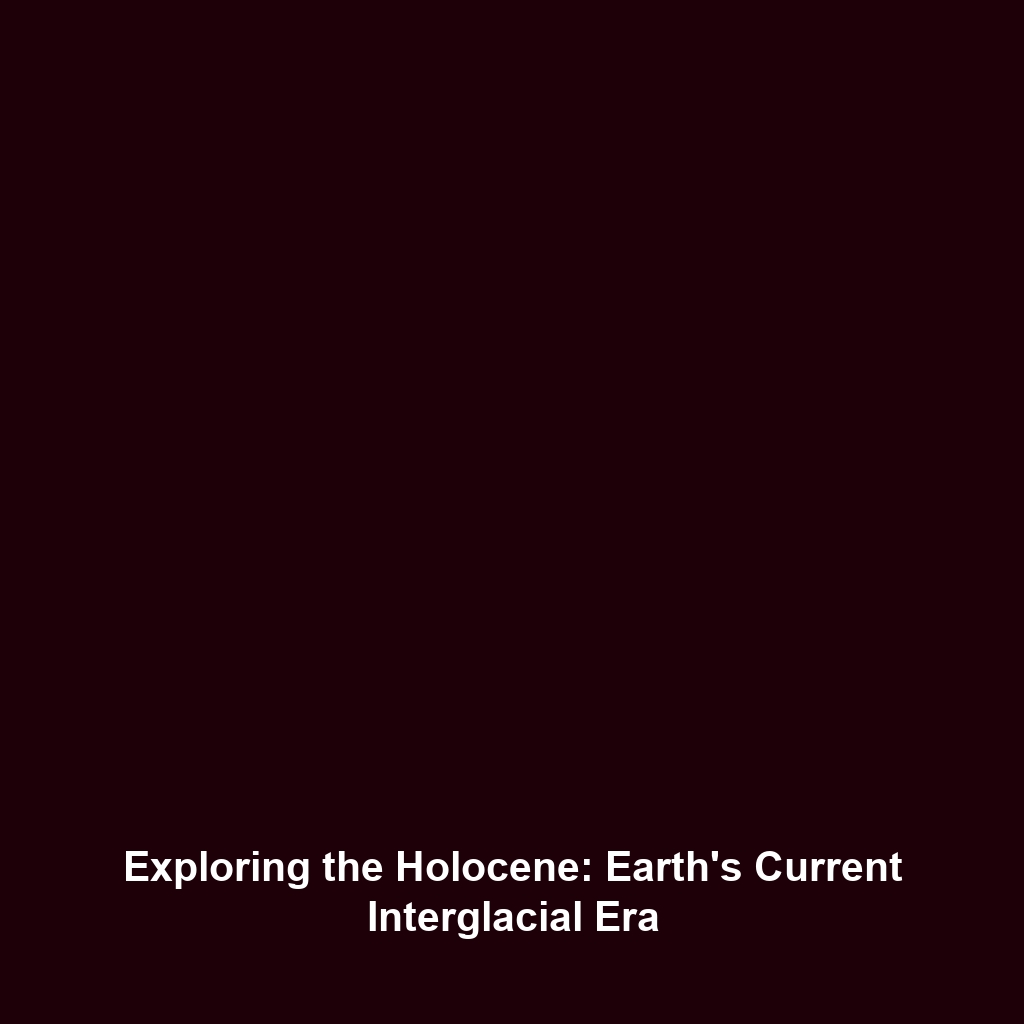The Holocene: Understanding the Current Interglacial Period
Introduction
The Holocene epoch, a significant chapter in climate history, began approximately 11,700 years ago and continues to the present day. This interglacial period is marked by relatively stable climate conditions that have enabled the flourishing of human civilization. As we delve into the current interglacial period, it becomes evident that understanding its characteristics is crucial not only to appreciate our past environment but also to address contemporary climate challenges. Engaging with this interglacial period contextualizes the climate changes we witness today and illuminates future implications.
Key Concepts
What is the Holocene?
The Holocene is the most recent geological epoch, following the last major Ice Age. It represents a time when global temperatures rose and stabilized, leading to the development of diverse ecosystems and the emergence of agriculture.
Climate Changes During the Holocene
Throughout the Holocene, shifts in temperature and precipitation patterns have impacted biodiversity and human activities. Notably, this period is characterized by:
- Relative warmth compared to glacial periods
- The development of human societies
- Significant agricultural advancements
- Current issues related to anthropogenic climate change
Applications and Real-World Uses
The study of the Holocene provides valuable insights into how ecosystems respond to varying climate conditions. Understanding this interglacial period has practical applications in various fields:
- Environmental Policy: Data from the Holocene can inform modern climate policies, aiding governments in making evidence-based decisions.
- Urban Planning: Insights on previous climate patterns assist in designing resilient urban infrastructures.
- Agriculture: Historical climate data can enhance agricultural practices by informing crop management under changing weather conditions.
Current Challenges
Studying the Holocene presents several challenges that limit our understanding of its implications for climate history:
- Data Scarcity: Limited geological records can hinder comprehensive analysis.
- Interpretation of Evidence: Differing interpretations of data can lead to conflicting conclusions about climate trends.
- Anthropogenic Influences: Distinguishing between natural changes and human impacts complicates the analysis of historical climate data.
Future Research and Innovations
The future of research on the Holocene holds exciting potential for technological advancements and deeper understanding of climate patterns. Innovative methods include:
- Advanced Climate Modeling: Improved simulations of past climates will enhance our ability to predict future scenarios.
- Interdisciplinary Approaches: Collaborations among paleoclimatologists, ecologists, and social scientists can provide a holistic view of the Holocene.
- Remote Sensing Technology: Enhanced technologies enable more detailed geological and environmental assessments.
Conclusion
In summary, the current interglacial period known as the Holocene is vital for understanding climate history and its future implications. As this epoch influences both environmental stability and human development, further exploration and research are necessary. For a deeper dive into related topics, consider reading more about climate change or paleoclimate data analysis to see how our past informs the present and future of our planet.
